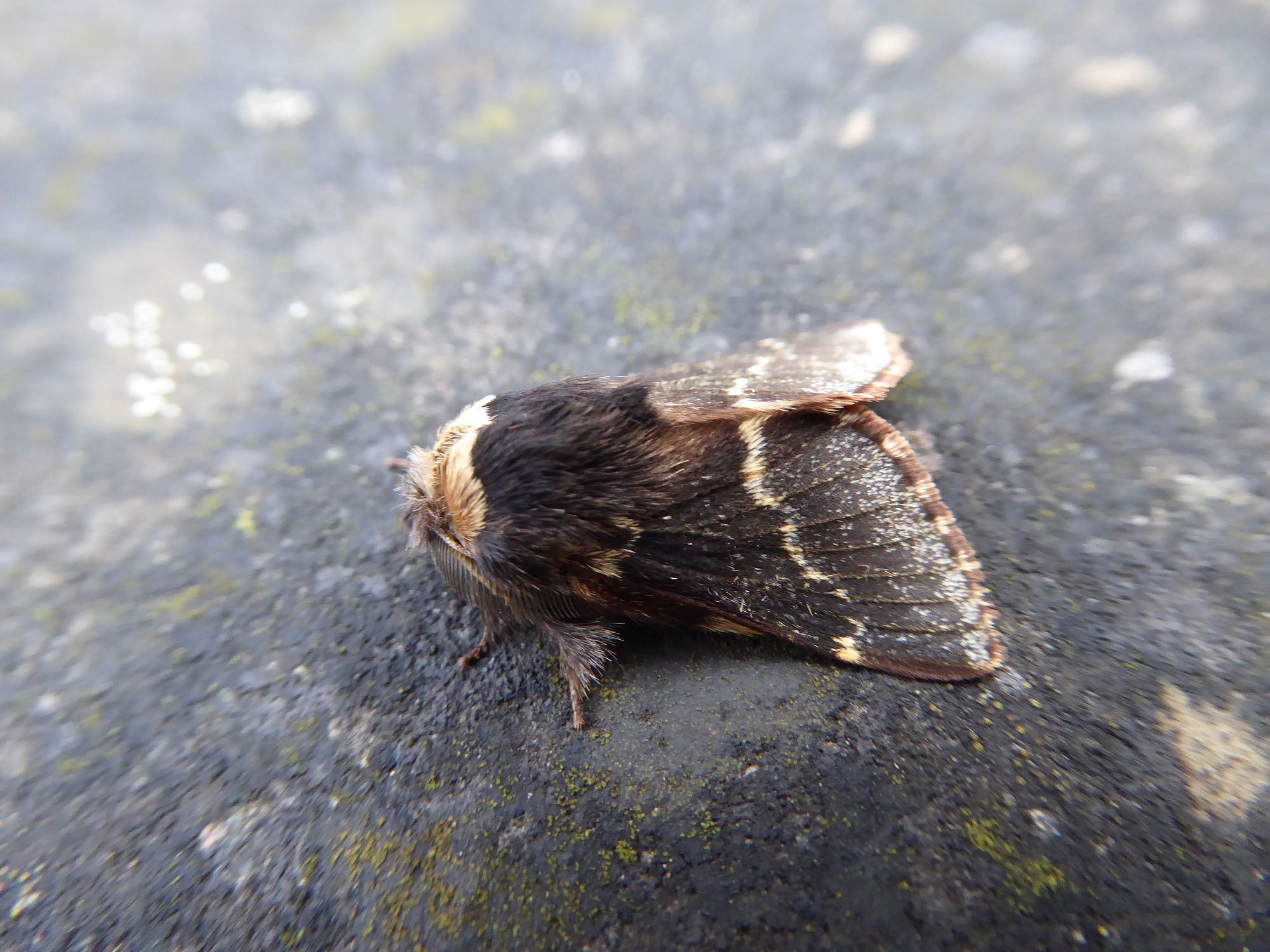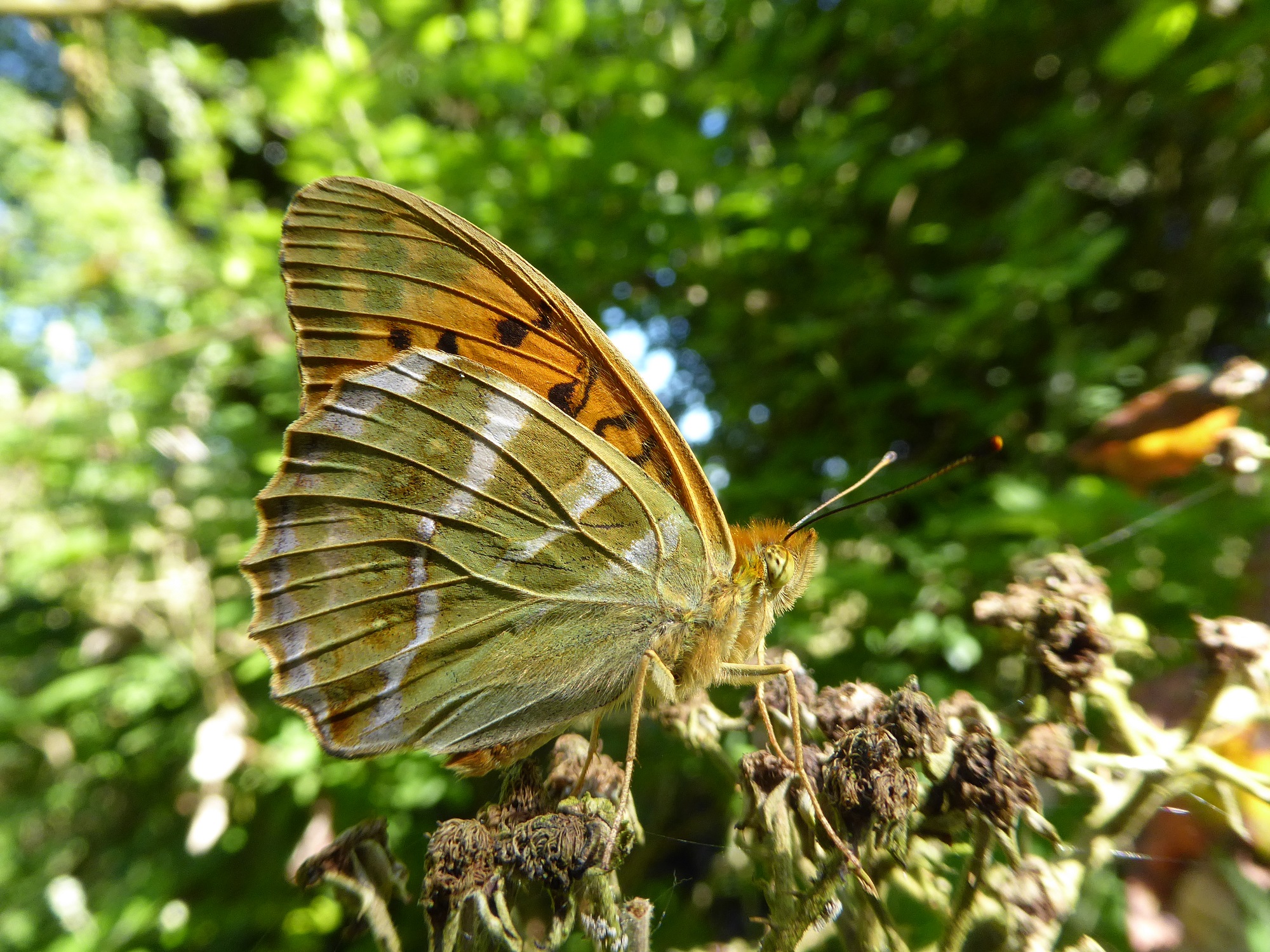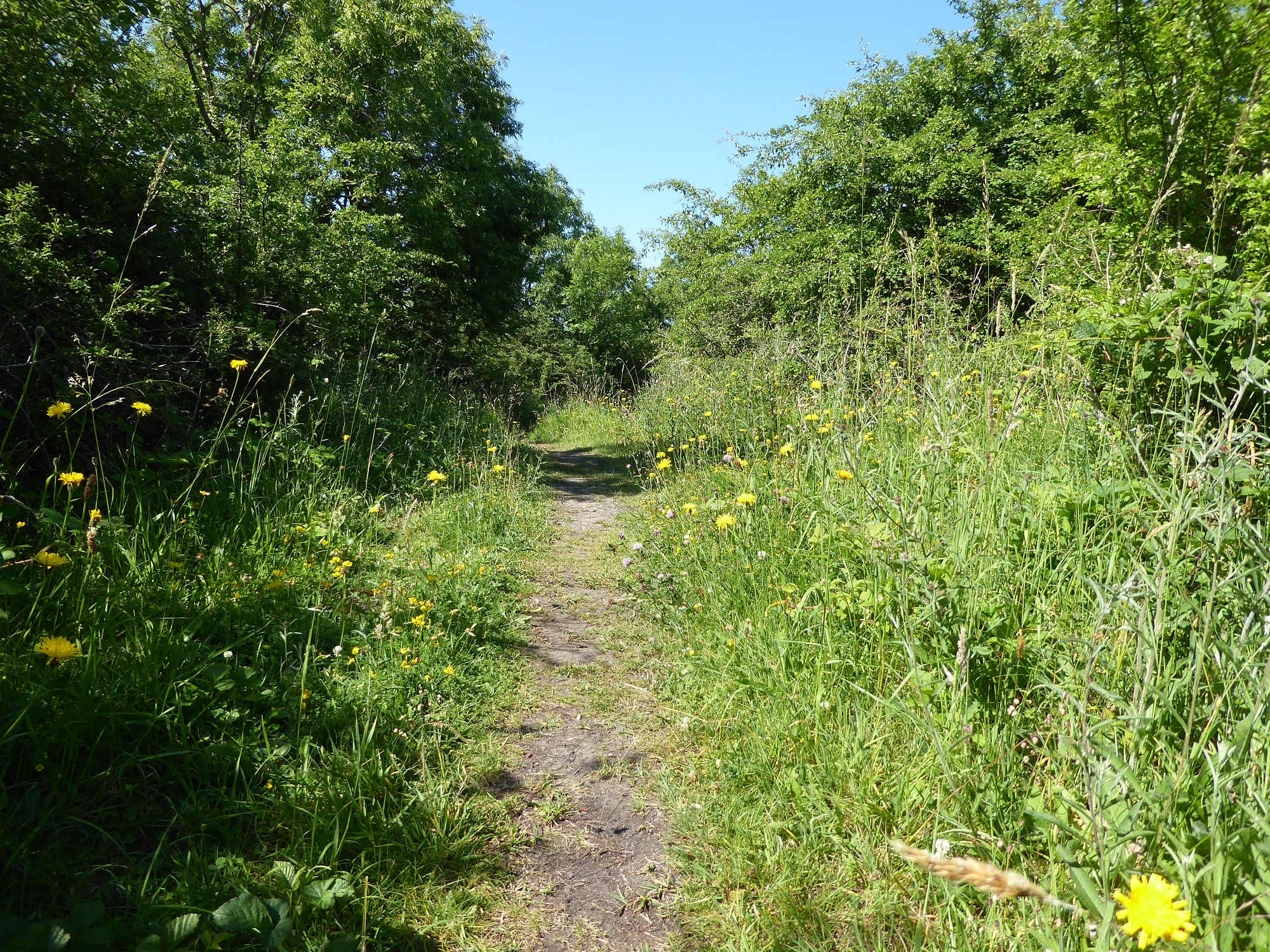December 1st is officially the first day of winter. The day began misty and mild clearing to a drier grey which later dissolved into a light rain as heavier cloud darkened the afternoon before petered out into twilight disconcertingly early. At least our winter moths liked the conditions which were accommodatingly mild allowing furry, thick-set December Moths and lightly built Winter Moths to gather on walls close to outdoor lights. While these moths are thin fare for butterfly and moth lovers, we are at least reminded that we still have signs of life, little pick-me-ups for the rather bleak weeks and months to come.
 December Moth, which flies from November to January.
December Moth, which flies from November to January.
But this is not the time for lethargy. Winter is time for actions of a different kind. Now is the period for preparing sites for the coming season. Targets need to be met. These targets may include clearing dense bramble and thorn scrub invading a flowery track the runs through woodland, opening a glade in dense woodland to allow flowers to bloom or to reveal a gorgeous female Common Holly glowing green and red in dimming December light, removing non-native trees or shrubs which threaten to overwhelm native woodland or thinning dense growth to let light in to make the violet plants suitable for breeding by Silver-washed Fritillary butterflies.
Some of these actions are needed on the banks of the Royal Canal near Mullingar. Butterfly Conservation Ireland members along with the Westmeath Branch of BridWatch Ireland joined the effort to restore habitats with the Baltrasna Boreen Biodiversity Group, led by Lesley Whiteside. The high bank has a range of habitats, including native ash woodland, scrub consisting of willow, Common Holly, Guelder Rose, Common Hawthorn, Common Blackthorn and calcareous grassland containing Kidney Vetch, Common Bird’s-foot-trefoil and Autumn Gentian.
The steep site has four parallel paths, each quite different, offering different experiences; an encounter with badgers on one, Common Blues dancing around yellow blooms on another, water birds on a third and a brisk walk on the gravelled towpath on the fourth path. The site was grazed until the early 1990s but since it has developed woodland out of which paths and clearings are being carved to develop new habitats and increase biodiversity.

To this end, overhanging branches were tackled along with dense scrub and a sinister invasion by cotoneaster, a non-native which causes great damage by carpeting good limestone grassland. Extensive clearing of dense scrub was achieved. By allowing in light the flowers will be able to blossom and the bees and butterfly species will be able to avail of their nourishment. It was a demanding job but much ‘heavy lifting’ is now done, making it easier to deal with younger scrub. We are looking forward to our outing there next spring/summer to see how the flora and butterflies respond.
Finally, there must be many opportunities for biodiversity-conscious local groups to get involved in such projects. With permission from landowners, some planning and research much can be achieved, for people and nature. A special thanks to the Baltrasna Boreen Biodiversity Group for looking after their butterflies so well in this intriguing spot in Westmeath.

Photographs ©J.Harding.

